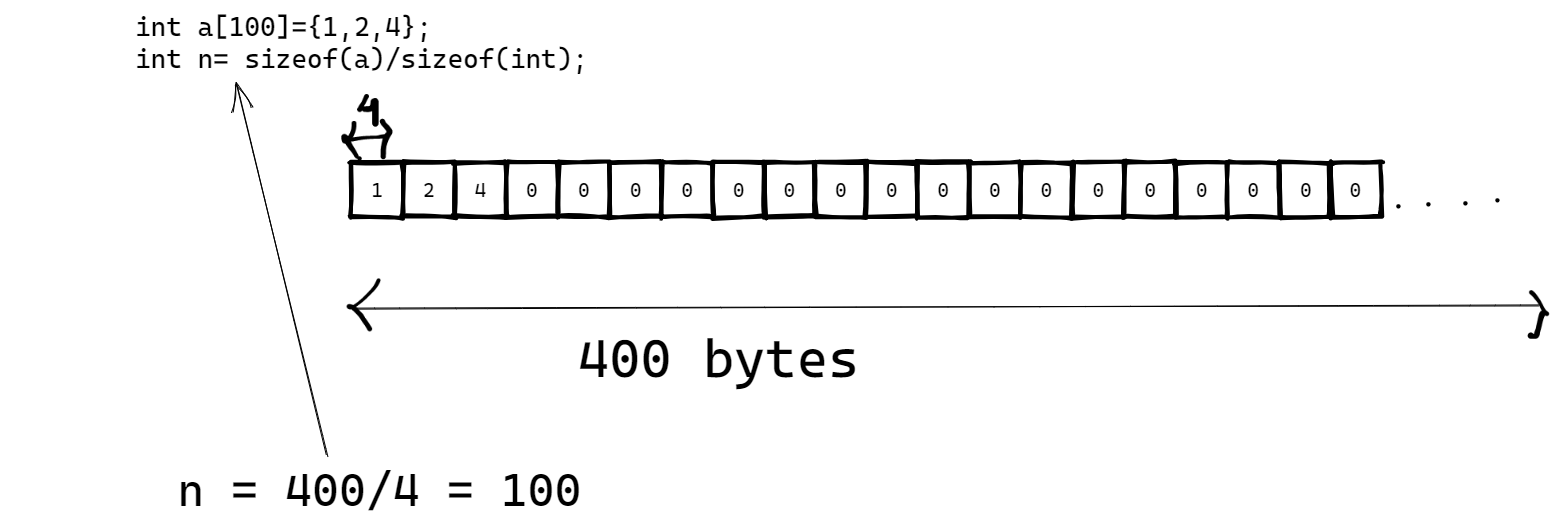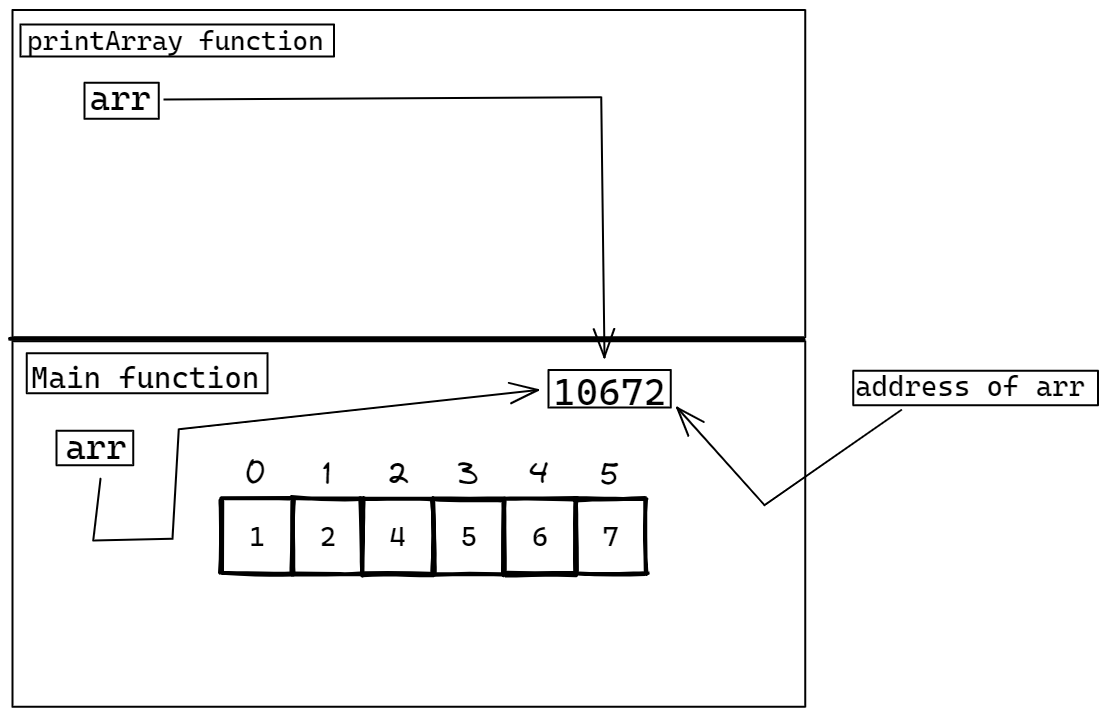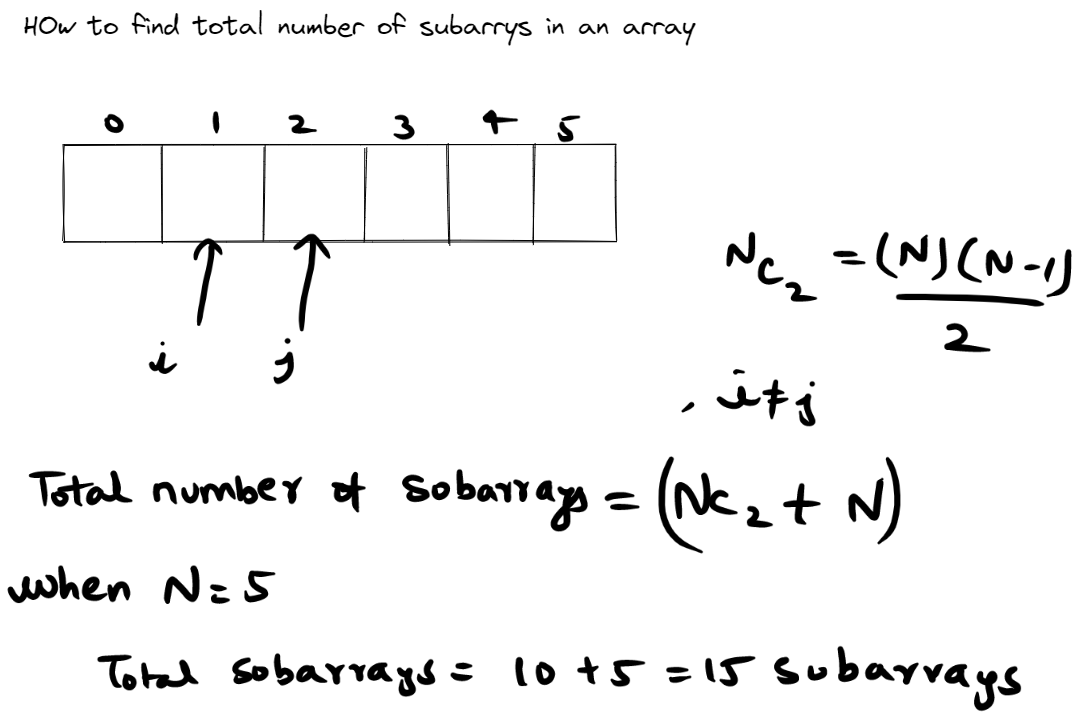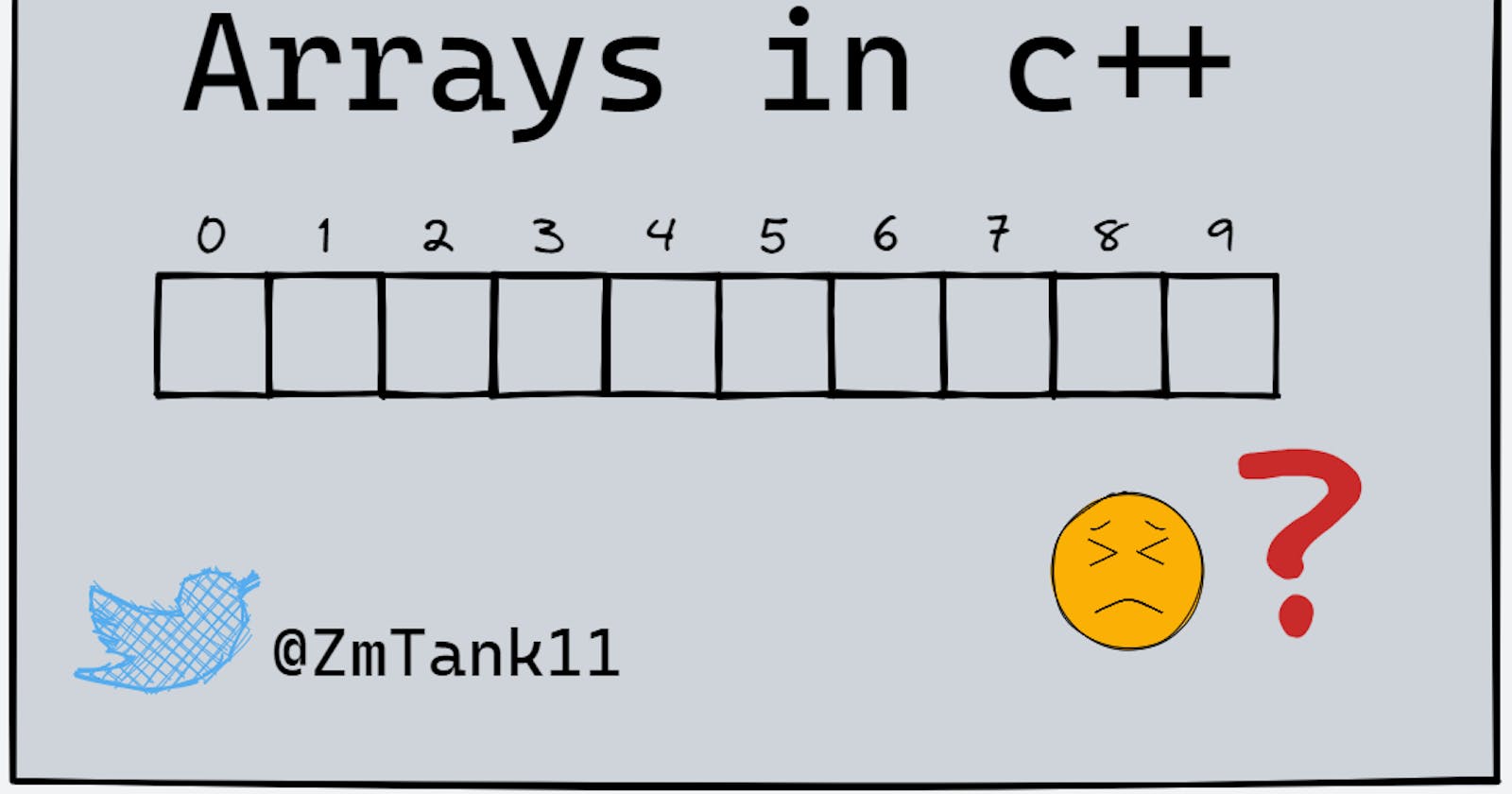Hello everyone 🙋♂️ in this article I will be talking about arrays like creating arrays, input, output, updating, etc, etc in a very simple way, so let us start 😊
Arrays Introduction
An array is the collection of elements of the same type placed in continuous memory locations.

We will look at how we can perform different operations on the array :
- creation
- input - output
- update
Creating an array
#include<iostream>
using namespace std;
int main(){
int a[10];
int b[10]={5};
int c[10]={4,5,6};
int d[]={2,3,5};
return 0;
}
How to find the size of an array ❓
#include<iostream>
using namespace std;
int main(){
int a[100]={1,2,4};
int n= sizeof(a)/sizeof(int);
cout<<n<<endl;
return 0;
}
output: 100

How to print elements of the Array ❓
#include<iostream>
using namespace std;
int main(){
int a[100]={1,2,4};
int n= sizeof(a)/sizeof(int);
//printing elements of the array
for(int i=0;i<n;i++){
cout<<a[i]<<',';
}
cout<<endl;
return 0;
}
How to input elements for the arrays ❓
#include<iostream>
using namespace std;
int main(){
//taking array as an user input
int n;
cout<<"enter number of participants :"<<endl;
cin>>n;
int a[n];
for(int i=0;i<n;i++){
cout<<"enter value for index "<<i<<" : "<<endl;
cin>>a[i];
}
for(int i=0;i<n;i++){
cout<<a[i]<<',';
}
cout<<endl;
return 0;
}
Passing Arrays to Function.
#include<iostream>
using namespace std;
void printArray(int* arr,int n){
arr[2]=100;
cout<<"in fun"<<endl;
for(int i=0;i<n;i++){
cout<<arr[i] <<endl;
}
}
int main(){
// Passing Arrays To functions
int arr[]={1,2,4,5,6,7};
int n= sizeof(arr)/sizeof(int);
printArray(arr,n);
cout << "In Main" << sizeof(arr)<<endl;
for(int i=0;i<n;i++){
cout<<arr[i] <<endl;
}
return 0;
}
Output :
in fun
1
2
100
5
6
7
In Main24
1
2
100
5
6
7
⚠️ Important concept 💡:
When passing arrays to the function the arrays are passed by reference i.e the array which you pass, and the new array in the function scope will be sharing the same memory which means they will be the same,
In the code given above 👆 you can see that, I have changed the value of arr[2] in the scope of the print array() function, as both are sharing the same memory printing the elements of the array will give the same output.
If you don't know what is passed by reference you can read this 👉 article C++ Pointers and pass by reference for more knowledge 🥸.
I tried to explain by this 👇diagram, hope you will get it 👍.

Printing Reverse on Array
#include<iostream>
using namespace std;
void reverse(int * arr, int n){
for(int i = (n-1) ; i>=0 ; i--){
cout<<arr[i]<<',';
}
cout<<endl;
}
int main(){
//printing reverse of an array
int n;
cout<<"Enter number of elements :"<<endl;
cin>>n;
int arr[n];
//taking input
for(int i=0;i<n;i++){
cout<<"enter element for "<<i<<"th index :"<<endl;
cin>>arr[i];
}
reverse(arr,n);
return 0;
}
Reversing the original array
There is a difference between printing the reverse of an array and reversing the original array, for the same we can use the concept of the pointer, see below 👇code.
#include<iostream>
using namespace std;
void reversearr(int * arr,int n){
int start=0;
int end= n-1;
while(start!= end){
swap(arr[start],arr[end]);
start++;
end--;
}
}
int main(){
int n;
cout<<"Enter number of elements :"<<endl;
cin>>n;
int arr[n];
//taking input
for(int i=0;i<n;i++){
cout<<"enter element for "<<i<<"th index :"<<endl;
cin>>arr[i];
}
reversearr(arr,n);
for(int i=0;i<n;i++){
cout<<arr[i]<<" , " ;
}
cout<<endl;
}
arr in the reversearr() function is pointing to the arr in the main function so changing in the scope of the reversearr() function is affecting the arr since both are pointing to the same array. see the below diagram. 👇

What are subarrays?
A subarray is the small continuous part of the array, which means you can start the sub-arrays at any index and end it at any index.

Now let's see how we can print every possible subarray
#include<iostream>
using namespace std;
int main(){
int arr[]={1,2,4,5,7};
int n=sizeof(arr)/sizeof(int);
for(int i=0;i<n;i++){
for(int j=i; j<n;j++){
for(int k=i;k<=j;k++){
cout<<arr[k]<<',';
}
cout<<endl;
}
cout<<endl;
}
return 0;
}
output:
1,
1,2,
1,2,4,
1,2,4,5,
1,2,4,5,7,
2,
2,4,
2,4,5,
2,4,5,7,
4,
4,5,
4,5,7,
5,
5,7,
7,
See the output 👆, the total number of subarrays is 15, we can use the formula (nc2, where n is 5 ) to find the total number of subarrays
Thank you for reading I hope you understood this concept .
Bye. 👋


